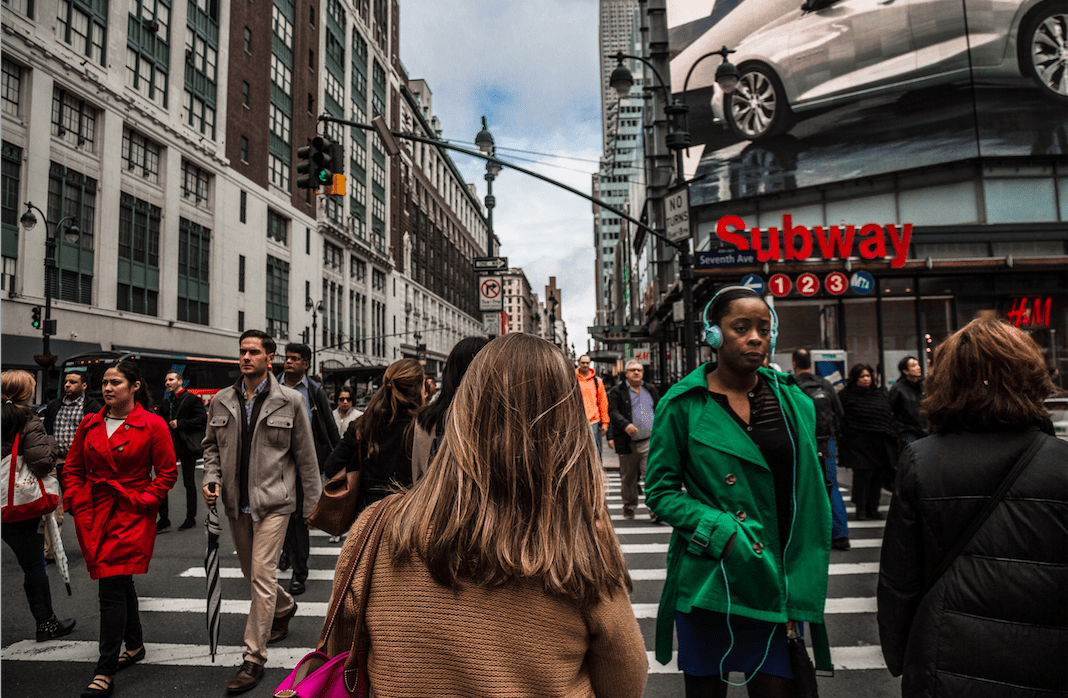
Account Director, Becky Brewer attended the Millennial 20/20 Summit in NYC last week. Below are her key takeaways from the event focused on marketing to millennials.
The Millennial Mindset: what is it, and how can we market to it? This was the point of discussion during last week’s Millennial 20|20 Summit in New York.
The event’s primary focus was to bring together large and small businesses, enabling them to discuss the ways innovation, disruption, and technology are evolving the business and marketing landscape. As described by the summit itself, this comes at a time where,
“ The way the consumer wants to shop, interact with brands, consume content and make payments are evolving.”
Millennial 20/20 aimed to address this evolution through a curated experience of multiple conference stages, immersive and experiential showcases, and organized networking experiences.
Below I break down my top 10 learnings from the event:
Online marketing is set to be the major factor in a consumer’s path to purchase, with mobile being the largest influence. As Anthony Long, Global E-Commerce Strategist at Kimberly-Clark put it:
“All paths to purchase today start with a smartphone. Where they end is up to you.”
2. Millennials are less of a demographic and more of a mindset, influencing other demographics’ purchasing behavior.
3. Vertical video has become the emerging form of advertisement based on revenue spent in mobile. Recent stats pulled from Cheetah Ad campaigns have seen a 25% increase in views on vertical video as compared to standard mobile video views.
4. Millennials want to be inspired and authentically engage with a brand as they see fit. There is so much choice out there – we are a generation subjected to somewhere between 4,000 – 10,000 advertising messages every. single. day. Contextualize! Tell your brand story in a way where Millennials can imagine themselves in the story line.
5. Brands need to find ways to combine and blend brand generated content with user generated content, helping to tell their story in an authentic and engaging way. Influencers should be used, but chosen carefully – ensuring that your brand message is coming across in an authentic way and not just purely for product placement. The same focus of time and effort should be put into branded content and ‘unbranded’ content so consumers start to think about them in the same way.
6. VR and AI are here to stay. Embrace them. Getty Images has seen a 400% increase in searches for virtual reality and a 90% increase in searches for 360 videos. As technology and photography have evolved new ‘norms’ have begun to form. The transition from black and white photography to color resulted in the expectation that all photos would be color. With these new technologies emerging people will begin to expect them. Competitive advantage comes from being well ahead of the curve
7. Amazon has helped shape the future of online purchases with features such as 1-click ordering. Products like Alexa are built entirely around this service offering, syncing up to Amazon for direct-to-cart purchases. The key now is to have millennials asking for your product by brand name rather than just a generic SKU e.g. Tide rather than “washing powder”
8. Content curators should have a seat at the table. Brands who are trying to get their story across to new markets should have content curators involved in the conversation so they can help tell stories in a more meaningful way.
9. Use social media to test your message in different channels. Focus on education rather than hard sells e.g. driving people to an article explaining how to use your product can often work better than just driving to a specific product page. Look at the communities you build; what they’re looking at and listening to and then curate content around these themes.
10. The average checkout form has twice as many fields as necessary, furthering drop-off rates (70% cart abandonment in 2017). Simplify this process utilizing new technologies e.g. adressy to help remove this pain point.
These are my top 10 insights from an event covering an extremely broad and complex topic. Will millennials continue to have a huge influence over brands and their marketing? Tweet us @Sociafly and let us know your thoughts!
Tweet us @Sociafly and let us know your thoughts!